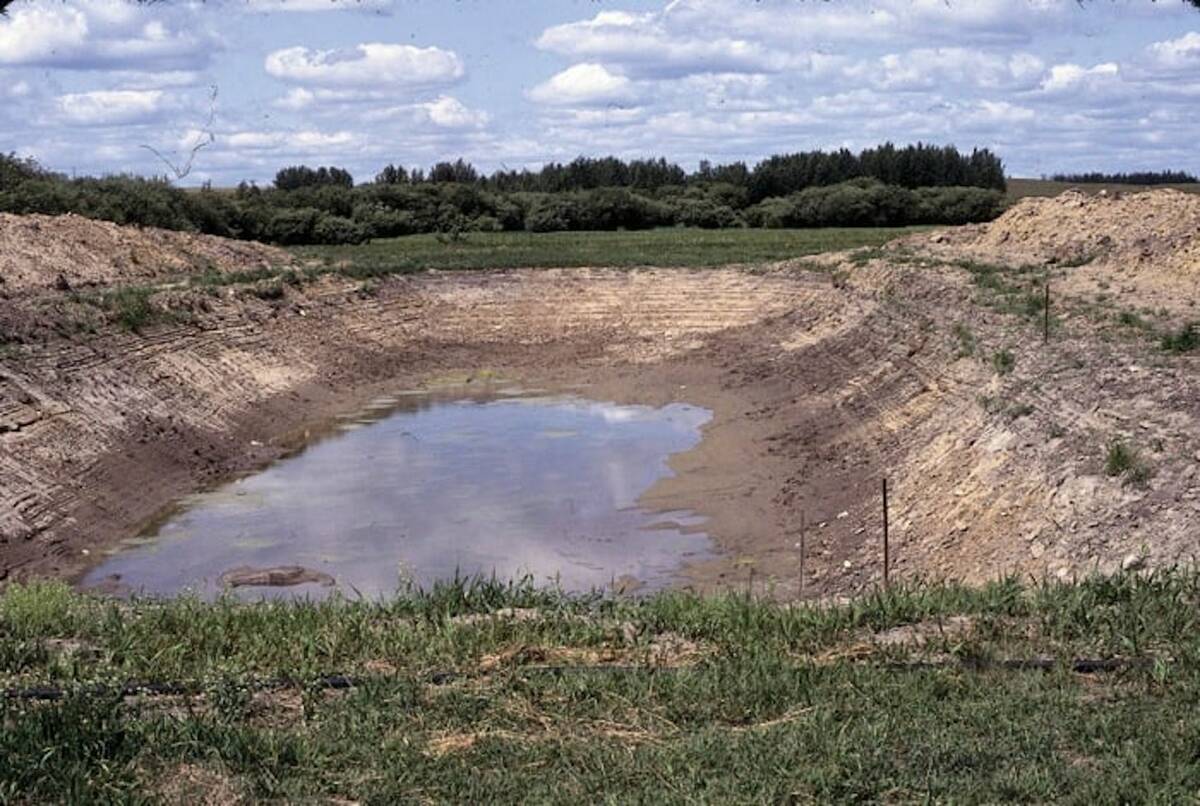Tissue samples from feral cattle on a remote, uninhabited island off the southern coast of Alaska show that the animals are not related to common North American breeds.
According to some accounts, Russian settlers first brought cattle to the Chirikof Island in the late 1700s, while others were shoved off ships and swam ashore periodically until the late 1800s.
According to an account on Wikipedia.com, the last known introduction of fresh genetics was in 1983, when an American entrepreneur brought in 600 head.
In 2003, the latest in a series of owners dating back to the 1940s managed to ferry 37 cattle off the island, but conditions on the vessel attracted the attention of the humane society and the project was stopped.
Read Also

Dry summer conditions can lead to poor water quality for livestock
Drought conditions in the Prairies has led to an decrease in water quality, and producers are being advised to closely monitor water quality for their animals.
Since then, the Alaskan government has wanted to get rid of the herd and convert the island to a bird sanctuary. However, Michael D. MacNeil, a U.S. Department of Agriculture geneticist in Miles City, Montana, said arguments over who owns the herd brought that process to a halt.
Along with other USDA scientists, MacNeil obtained tissue samples from the cattle on Chirikof Island and compared them with samples from the department’s National Animal Germplasm Program (NAGP) in Fort Collins, Colorado.
The study also used genotypes for 60 Siberian Yakut cattle obtained from a Finnish collaborator.
MacNeil said the cattle have endured a century of some of the toughest conditions on earth without human intervention.
Among the common commercial breeds, Chirikof Island cattle were most closely related to Shorthorns, Highland, Hereford and Angus, but were slightly more similar to Siberian Yakut cattle, which MacNeil called a nominally domestic breed.
“There’s historical evidence that the Russians brought cattle to some islands in Alaska and put them there to feed fur trappers and so on,” he said.
“So it is at least plausible that these cattle were part of a planned importation by the Russians.”
Yakut cattle are small, stocky and extremely hardy, but they are rare, so the availability of their genetic material is limited.
NAGP geneticist Harvey Blackburn, in comments published on www.thecattlesite.com, said the analysis suggests U.S. genotypes that were introduced to Chirikof Island did not successfully adapt to the environment.
“As a result, they had little impact on the feral population, which further strengthens the hypothesis that the cattle are unique in their ability to survive on the island.”
MacNeil said the Chirikof cattle, might be worth conserving because they may have benefits for the burgeoning grass-fed cattle industry in North America.
He said the cattle’s unique genes may relate to characteristics such as cold-hardiness or adaptability to specific forages that would be valuable for cattle breeders and producers. However, the study did not identify production attributes.
“The existence of genetic material that is not exactly like most of the commercial material available presents some pretty significant opportunities for us in the future,” he said.
“If it was a perfect world, and I could have anything I wanted, I would love to have three or four bulls from that island because I think they’d be really interesting to look at.”
















